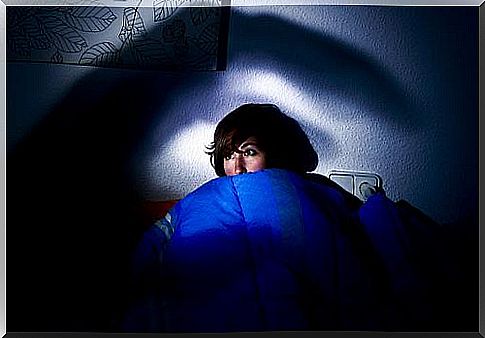Is Sleep Paralysis Dangerous?

Sleep paralysis is an experience that often produces a lot of anxiety. It mainly occurs when a person is just falling asleep or waking up and is characterized by the inability to move or talk while the person is aware of their surroundings. It is also often accompanied by auditory hallucinations, such as hearing footsteps approaching and an intense sense that something or someone is present, but is sleep paralysis dangerous?
Despite the unpleasant and seemingly menacing nature of the attack, sleep paralysis is completely harmless and can happen to anyone without necessarily being a sign of pathology or illness. It is associated with a state of anxiety or stress. The hypothesis as to why sleep paralysis occurs is that you are briefly stuck in a REM state when you wake up, experiencing the characteristics of both states.

It often takes one to three minutes, and while you can’t move your muscles voluntarily, your respiratory muscles will continue to function automatically. Sleep paralysis falls under the category of parasomnias and is associated with narcolepsy.
Types of Sleep Paralysis
There are three types of sleep paralysis:
- . This can occur in healthy individuals who experience a lot of stress or who have jet lag, anxiety or sleep deprivation. People who experience the isolated form will probably never experience it again. This form does not require professional help.
- . In some cases, the episodes repeat, even if they are not accompanied by any other symptom. They are also common in several other family members. There are few of these familial cases.
- . Conditions such as narcolepsy can be accompanied by episodes of sleep paralysis.
Characteristics of REM sleep and sleep paralysis
During the night we go through different sleep phases, one of which is called REM sleep, also called Rapid Eye Movement. This phase starts after about 70-100 minutes of sleep and is known as the dreaming phase. This phase is repeated four or five times during the night.
The body takes a number of precautions to keep you safe while you sleep. The muscles of the body are paralyzed to protect you. For example, in a dream you might run away from something or make movements that, if performed in real life, could endanger yourself or someone else. During this phase there is a lot of brain activity.
When you wake up paralyzed, it means that the brain is still in REM sleep and your muscles are still paralyzed. Although you can open your eyes, you cannot move the rest of your body. In addition , your dreams can become intertwined with reality, causing you to experience hallucinations. Even though the hallucinations seem completely real at the time, they are nothing more than dream material that merges with reality.
Hypnagogic and hypnopompic hallucinations
As if not being able to move even a finger isn’t scary enough, the experience becomes even more unpleasant when accompanied by hallucinations. Auditory and visual hallucinations are common and often have a threatening quality. It is common to hear footsteps approaching or to see a silhouette in the room.
It can also feel as if there is a presence , as if someone else is in the room. Sometimes it feels like someone is touching you or pushing on your chest, making it hard to breathe. There are two types of hallucinations that can occur during an attack of sleep paralysis, depending on when the attack occurs, whether this is while falling asleep (hypnagogic) or while waking up (hypnopompe).

It’s important to keep in mind that these hallucinations don’t have to indicate a condition that you should be concerned about. These kinds of hallucinations are nothing more than an extension of your dream while you are already awake and they can happen to anyone. If they are not accompanied by excessive sleepiness, cataplexy or other daytime symptoms, then there is no need to panic.
Tips to prevent sleep paralysis
Sleep paralysis is not dangerous, nor does it pose any risks. The best thing you can do is try to relax , and you become aware of the fact that nothing bad is going to happen and it only takes a few minutes. There is not much you can do once you are in this state. What you can do is keep the tips below in mind to make sure the attacks don’t happen as often.
One of the main causes is stress. So it would be wise to try to reduce your stress level before going to bed. For example , do some relaxation exercises, try to get enough hours of sleep and, in short, practice good sleep hygiene.
Understanding the brain mechanisms involved in sleep paralysis can help make episodes like this a little less mysterious. If we don’t understand how the brain works, these episodes can contribute to mental illness or even paranormal experiences that are far from reality.









